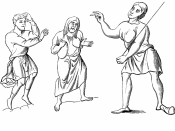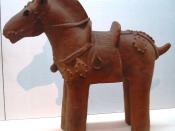Warfare in the middle ages experienced many transformations. These were due to technological, cultural and social developments. It changed in several areas such as tactics, and the role of cavalry, and artillery. Two technologies that helped change the face of warfare were the introduction of stirrups and the advancements in artillery.
During the early medieval period wars were fought on the field with horses and soldiers. With the use of heavy armor and weapons stirrups were essential to help the solider stay mounted. According to Craig, Graham, Kagan, Ozment, and Turner (2005, p.303) stirrups were introduced in Europe in the eighth century. They played an important role in medieval warfare. Prior to their use cavalrymen had difficulty controlling their horses and keeping their balance. This brought a change in the style of European warfare from infantry to cavalry being important in battle. With the advent of stirrups came the introduction of more lethal weapons that could be used while astride a horse.
The use of stirrups allowed the mounted solider more ways to fight from atop the horse. Graham et al. (2005) states that mounted warriors became the key ingredient for a successful army in search of riches and glory.
Artillery in the medieval ages before the use of gunpowder was an effective weapon in battle. These war engines were in use for hundreds of years before and in many other regions. The advancements seen in medieval Europe helped decide many battles. One particular battle, The Hundred YearsÃÂ War, according to Craig et al. (2005, p. 305) was a turning point in military tactics. Heavy artillery and infantry pushed aside the cavalry in importance in battle.
There were two different types of artillery, direct and indirect-firing machines. One example of the direct-firing machines was the baliste. These were large machines...



Muddled
This essay is confusing. It says alternately that cavalry pushed aside infantry, that infantry and artillery pushed aside cavalry -- which did which. Further, there was too many conclusory statements without adequate explanation: artillery weapons had an effect on the outcome of battles. Well, given that they were used for several centuries, presumably they did have an effect. But what effect? The writer asserts that they changed the course of history. How? In what way? With what result?
In short, this needs work.
0 out of 1 people found this comment useful.